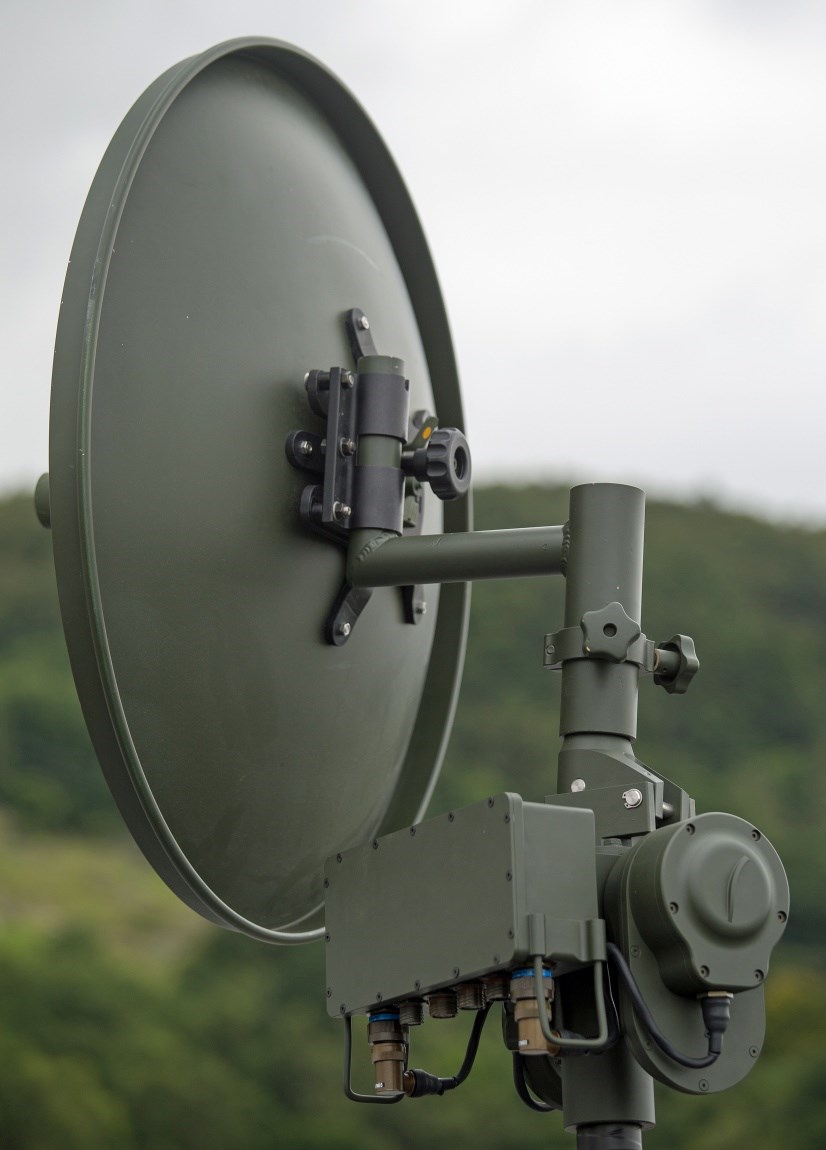CAPAS-RT-2
The Comrod family of CAPAS® Automatic Payload Alignment Systems are designed to meet the challenges faced by public safety, defence and demanding industrial users. CAPAS® systems enables quick and effective deployment of communication or sensor assets in extreme environments without exposing personnel to unnecessary danger.
The CAPAS-RT Rotator Tilt System accomplishes this by allowing computer controlled tilt and rotation for payloads. The compact design allows the system to be used in a wide range of applications, and the rotator itself does not require a rotary joint for continuous rotation.
The powerful drive system coupled with the integrated magnetic compass ensures fast and accurate positioning. CAPAS-RT supports both closed loop and open loop alignment, or a combination of both. In closed loop alignment mode the system is controlled by a radio transceiver to optimise received signal strength and minimise bit error rate. In open loop
mode the system can utilise input from the Comrod TCT Planning System for quick initial positioning. Closed loop feedback from the radio can then further optimise the alignment within a fraction of a degree.
The CAPAS-RT is fully rugged per MIL-STD-810, and is suitable for a wide range of deployable masts, including Comrod TM, LMT and ULM series.
REQUEST A QUOTE
| Power Supply | 18 to 54 VDC (MIL-STD 1275E) |
|---|---|
| Alignment Modes | Closed loop mode with radio transceiver control Open loop mode with magnetic compass Hybrid mode |
| Planning Tool (Optional) | Comrod TCT Mission Planning System |
| Pointing Accuracy | ~ 0.5 degrees relative to base |
| Rotating Speed¹ | > 10° per second (without payload, with power supply of 28V-2A) |
| Mechanical Limits | Rotation axis: Infinite. Tilt axis: +/- 15° Arbitrary limits can be defined in software |
| Torque² | Azimuth: >50Nm Dynamic (with power supply of 28V-2A), >200Nm Static (survival) Elevation: >100Nm Dynamic (with power supply of 28V-2A), >400Nm Static (survival) |
| Payload Capacity³ | 20 kg in-balance load, 0.5 m2 frontal wind area at 25 m/s (operational), 33 m/s (survival) |
| Operating Temperature (Ambient) | – 40°C to + 60°C |
| Dimensions (Nominal) | Width: 380 mm Height: 440 mm Depth: 290 mm |
| Weight (approximate) | 14.5 kg |
| Mounting | Lower socket, Ø 51 mm x 90 mm long Upper payload mounting spigot Ø 49.8 mm x 135 mm Adaptors and extension tubes are available for a wide range of payloads and masts |
¹ Dependent on power supply and payload weight/area
² Dynamic torque is dependent on power supply voltage and current
³ Represents the value of torque above
| Interfaces | CAN, RS232, RS485, or Ethernet (not all available together) |
|---|---|
| Vehicle Power | MIL-STD 1275E |
| EMC/EMI | MIL-STD-461F CE102, RE102, RS103, CS101, CS114, CS115 and CS116 |
| Operating Temperature | Ambient: – 40°C to + 60°C |
| Encapsulation | MIL-STD-810G, Method 506.5, Procedure I, for rain and blowing rain |
| Solar Radiation | MIL-STD-810G, Method 505.5, Procedure I (4 x 24h exposure) |
| Salt Fog | MIL-STD-810G Method 509.5 (> 96h) |
| Icing/Freezing Rain | MIL-STD-810G, Method 521.4 (ice thickness = 6mm) |
| Sand and Dust | MIL-STD-810G Method 510.5 Procedure I and II |
| Altitude | Operational: MIL-STD-810G: Method 500.5, Procedure II, 4572 m (15000 ft) at 57.2 kPa Storage: MIL-STD-810G: Method 500.5, Procedure I, 12192 m (40000 ft) at 18.8 kPa |
| High Temperature | Operation: MIL-STD-810G, Method 501.5, Procedure II , 60°C Storage: MIL-STD-810G, Method 501.5, Procedure I, 71°C |
| Low Temperature | Operation: MIL-STD-810G, Method 502.5, Procedure II, – 40°C Storage: MIL-STD-810G, Method 502.5, Procedure I, – 51°C |
| Humidity | MIL-STD-810G, Method 507.5, Procedure II, Aggravated |
| Vibration* | MIL-STD-810G, Method 514.6C Table 514.6C-VI. Composite wheeled vehicle vibration exposures figure 514.6C-3* MIL-STD-801G, Method 514.6D, Ground Vehicle Category 20, Wheeled/Tracked/Trailer, Procedure I/III* |
| Shock* | MIL-STD-810G, Method 516.6, Procedure I, functional Shock, 12g 11ms* |
* Unit without payload. Permanent mount required for high shock/vibration environments

